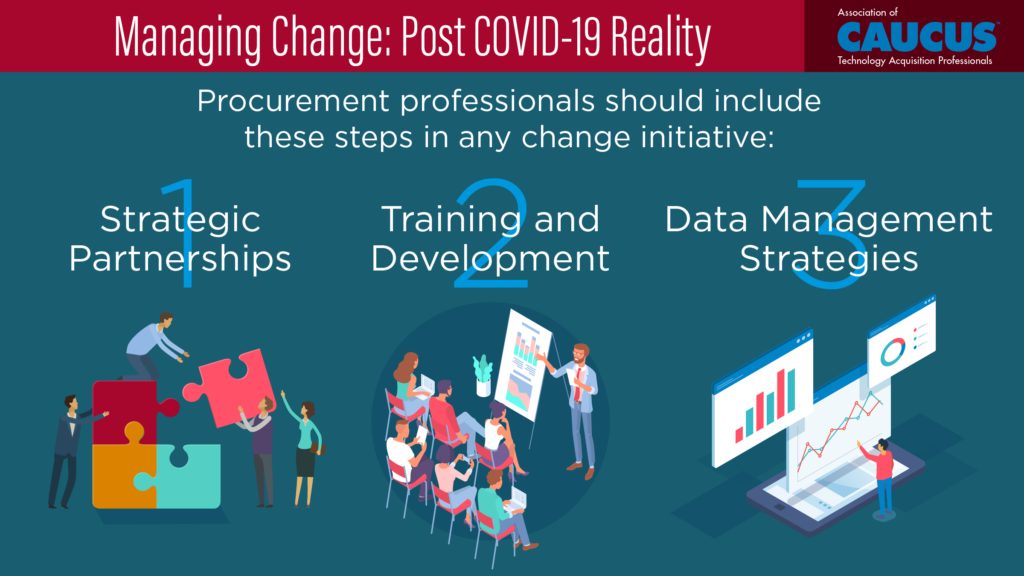Managing Change: Post-COVID Reality
by T. Jeff Vining – Executive Director – CAUCUS
Now, as procurement professionals begin to shape their post-pandemic reality, how can they learn to master change?
Change Is Constant: How Can You Manage It Better?
“The greatest danger in times of turbulence is not the turbulence –it is to act with yesterday’s logic.”-Peter Drucker
This prescient quote suggests that organizations fail or succeed based on their ability to plan for any eventuality. It is vital to challenge the status quo to look at how your organization is operating and assess how it could do better.
Due to the COVID-19 pandemic, procurement leaders are now at the forefront of change, new strategic approaches and new processes. If change is constant and procurement is complex, can you manage change?

Procurement leaders are now realizing there is no one-and-done when it comes to making major changes in procurement processes and procedures. Rather, it is a constant posture for positive change within your department as well as your organization.
Include these steps in any change initiative:
1.Strategic Partnerships. Treat all suppliers and vendors as business partners. Due to the large number of exchanges taking place during the procurement stage, organizations have witnessed a rise in productivity, profitability, and growth when buyers and suppliers have positive relationships. As partners it is easier to look for ways to adjust to change (supply chain reconfiguration), reduce costs (a centralized or decentralized model) or streamline processes. While good relationships with all suppliers are important, they are critical for your key suppliers.
2. Training and Development. Internal and partner training focused on contract management, project management and risk will help employees better understand all the complexities that define every procurement. The more informed and trained they are, the better choices and investments they are likely to make.
3. Data Management. Procurement is often defined by repetition of certain routine tasks, such as, inventorying and reconciling assets. If they are not already, automate routine processes as much as possible. Obtain deeper insights into spending habits and reduce inaccuracies by collecting and analyzing data, to predict changing requirements in supply and demand. This will enable employees to focus on more mission-critical tasks.
Sources:
Speed Edge
Core Centric

